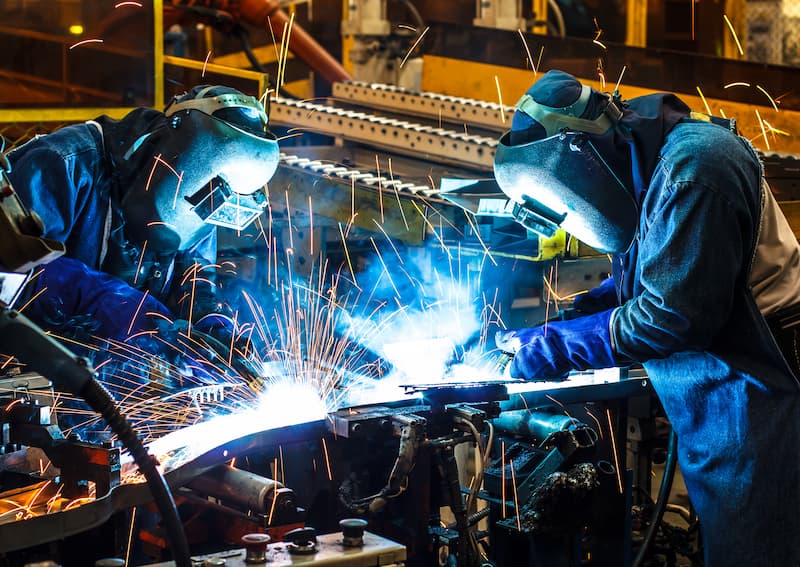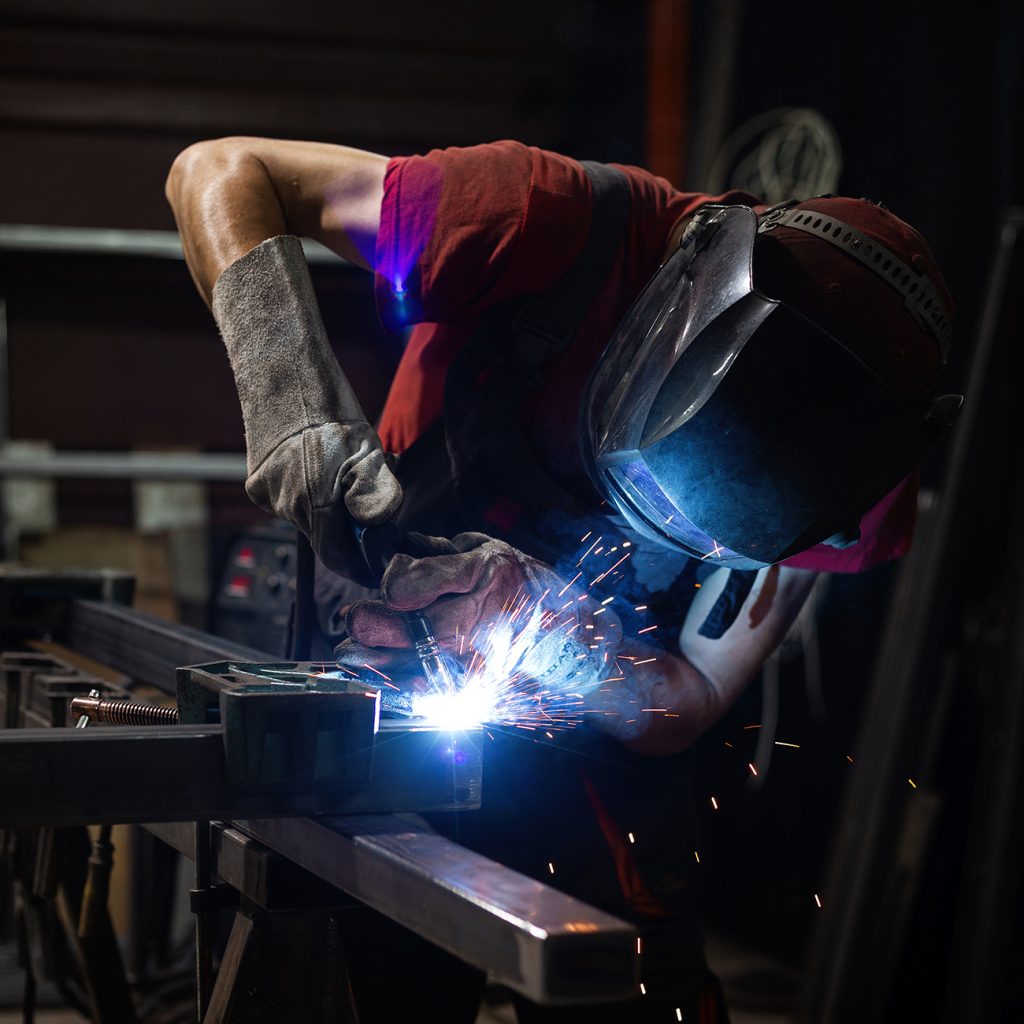All About Welding: Trick Insights Into Techniques and Best Practices for Success
Welding incorporates a selection of strategies, each suited for details materials and applications. Comprehending these approaches, such as GMAW, SMAW, and TIG, is important for achieving ideal results. Furthermore, the right equipment and security methods can not be neglected. As prep work and repairing play critical roles in the welding process, grasping these components can greatly improve the top quality of the end product. What are the key aspects that assure a successful weld?
Comprehending Various Welding Strategies
Welding strategies incorporate a range of methods, each matched to particular applications and products. Amongst the most typical methods are Gas Steel Arc Welding (GMAW), Secured Metal Arc Welding (SMAW), and Tungsten Inert Gas Welding (TIG) GMAW, additionally called MIG welding, is preferred for its speed and convenience, making it suitable for thin products. SMAW, or stick welding, is preferred for its simplicity and effectiveness in exterior settings, particularly with thicker metals. TIG welding provides accuracy and control, making it appropriate for elaborate work and non-ferrous metals (Welding). Each strategy has its one-of-a-kind advantages and factors to consider, permitting welders to choose the most effective approach based upon the project's needs, product kind, and preferred end results. Recognizing these strategies is necessary for effective welding
Necessary Welding Equipment and Devices
While different welding methods require specific abilities, the appropriate devices and devices are just as essential for accomplishing high quality outcomes. Essential welding devices consists of welding machines, which vary relying on the strategy-- such as MIG, TIG, or stick welding. Protective equipment, including safety helmets, gloves, and aprons, guarantees safety and security and convenience throughout the process. Additionally, clamps and components aid protect materials in location, making sure accuracy in welds. Consumables like welding poles, wire, and shielding gas are additionally critical parts that influence the high quality of the weld. In addition, tools such as grinders and cutters help with surface area prep work and post-weld completing, adding to an expert result. Purchasing high-quality equipment inevitably enhances the performance and performance of welding jobs.
Safety And Security Practices in Welding
Correct security practices are vital in the welding industry to shield employees from potential threats. Welders need to use proper individual protective equipment (PPE), consisting of helmets with proper shading, handwear covers, and flame-resistant garments. Ample air flow is important to lower exposure to harmful fumes and gases created during the welding process. In addition, employees must be educated in the correct handling of welding tools to stop mishaps. Fire precaution, such as maintaining flammable products away from the welding area and having fire extinguishers readily available, are required. Regular assessments of equipment and work spaces can aid determine potential hazards before they bring about accidents. By adhering to these safety techniques, welders can produce a more secure working environment and decrease risks related to their trade.
Preparing Materials for Welding
Preparing materials for welding is a vital step that considerably affects the top quality and integrity of the end product (Montana Mobile Welding and Repair Welding). Proper preparation entails cleaning up the surfaces to get rid of impurities such as corrosion, dirt, and oil, which can jeopardize the weld. Strategies such as grinding, fining sand, or making use of solvents are frequently utilized to achieve a tidy surface area. Furthermore, making certain that the materials fit with each other comfortably is necessary; spaces can cause weak welds. It's also essential to think about the positioning and positioning of the parts, as this will influence the convenience of welding and the final outcome. Selecting the suitable filler product and ensuring compatibility with the base steels is important for achieving strong, resilient welds.
Tips for Achieving High-Quality Welds
Accomplishing high-quality welds requires focus to information and adherence to finest techniques throughout the welding process. Proper joint prep work is crucial, guaranteeing surface areas are totally free and tidy from impurities. Picking the proper filler material and welding strategy based on the base steels is vital for perfect bonding. Maintaining regular traveling rate and angle while welding can stop problems and promote harmony. Additionally, managing warmth input is vital; excessive warm can lead to warping and compromised joints. If needed, regularly evaluating the welds during the process allows for instant changes. Utilizing proper post-weld therapies, such as cleaning and tension alleviation, can improve the sturdiness and integrity of the weld, inevitably ensuring an effective outcome.
Troubleshooting Typical Welding Issues
Welding commonly provides challenges that can impact the quality and stability of the final item. Usual issues such as porosity, irregular weld beads, and overheating can develop, each needing particular fixing strategies. Understanding these troubles is crucial for welders to boost their skills and accomplish optimal outcomes.
Porosity Troubles Described
Although porosity can often be ignored, it remains a critical concern in welding that can compromise the integrity of a completed product. Porosity describes the visibility of small gas pockets within the weld grain, which can lead and compromise the joint to early failure. This issue usually emerges from contaminants, moisture, or incorrect securing gas insurance coverage throughout the welding process. To reduce porosity, i was reading this welders ought to verify that the base products are tidy and completely dry, make use of appropriate protecting gases, and maintain regular welding specifications. On a regular basis evaluating the devices and environment can additionally help identify potential issues before they show up in the weld. Dealing with porosity effectively is important for attaining strong, long lasting welds that fulfill high quality criteria.

Inconsistent Weld Beans
Irregular weld grains can significantly affect the top quality and strength of a completed product. Various factors add to this concern, including incorrect travel rate, wrong amperage setups, and inconsistent electrode angles. When the welder relocates as well quickly, a bead may show up slim and lack infiltration, while moving too slowly can create extreme accumulation. In addition, utilizing the incorrect amperage can result in either undercutting or extreme spatter, both of which compromise weld honesty. The welder's technique, such as irregular torch movement, can additionally lead to irregular bead appearance. To mitigate go to these guys these troubles, welders need to concentrate on maintaining constant, regulated motions and ensuring proper devices settings to accomplish harmony in their welds. Uniformity is vital to attaining solid and reputable welds.
Getting Too Hot and Warping Issues
Too much warmth during the welding process can lead to considerable getting too hot and buckling problems, influencing the architectural honesty of the work surface. These troubles often manifest as distortion, which can compromise positioning and fit-up, making more setting up challenging. Aspects adding to overheating consist of the option of welding parameters, such as voltage and travel rate, along with the sort of product being bonded. To reduce these concerns, welders should keep constant travel speed and suitable warmth input while checking the work surface temperature level. Furthermore, pre-heating or post-weld heat therapy can assist minimize tensions triggered by quick air conditioning - Montana Mobile Welding and Repair. Routine assessment and adherence to best practices are vital in stopping overheating and making certain the longevity and dependability of welded structures
Frequently Asked Concerns
What Are the Career Opportunities in the Welding Industry?
The welding sector uses diverse profession chances, including placements as welders, instructors, designers, and examiners. Experts can operate in manufacturing, building, aerospace, and automobile industries, benefiting from strong demand and affordable incomes in numerous functions.
How Can I Improve My Welding Rate Without Compromising High Quality?
To improve welding speed without compromising top quality, one ought to exercise efficient techniques, keep devices, optimize settings, and boost hand-eye sychronisation. Normal training and seeking comments can additionally greatly add to attaining faster, high-quality welds.
What Certifications Are Available for Welders?
Many qualifications exist for welders, including those from the American Welding Culture (AWS), the National Center for Construction Education And Learning and Study (NCCER), and various industry-specific companies. These qualifications enhance employability and demonstrate skill efficiency.
Just How Does Welding Affect the Residences of Metals?
Welding affects the residential or commercial properties of steels by altering their microstructure, which can bring about modifications in ductility, firmness, and strength. Warmth input and air conditioning prices throughout the process significantly impact these product attributes.
Can I Weld Dissimilar Metals With Each Other?
